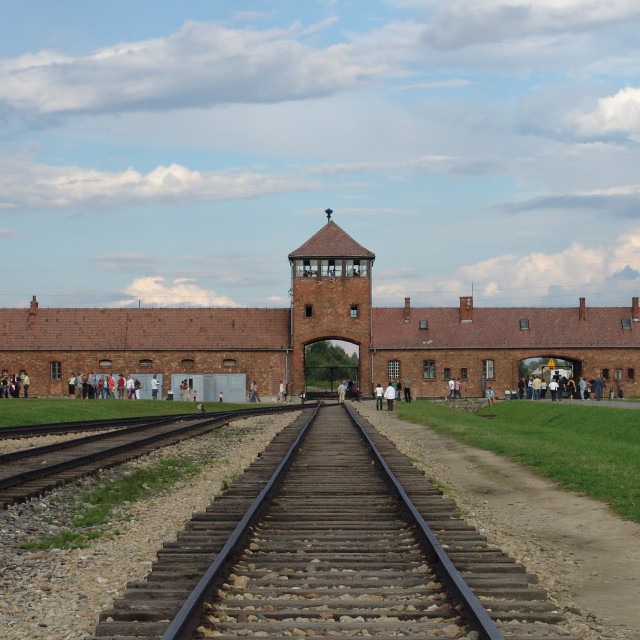When the water flowed, we shouted hooray!
In October 1944, about a hundred Czech women were transferred from Auschwitz to work in a factory for flax processing in Merzdorf. The selected women did not know until the last moment what was going to happen to them. Jana Dubová recalled: "In the evening, almost at night, it was dark, we kept going somewhere and we didn't know if we were going to be gassed or what's going to happen to us. The gas chambers were made in a very clever way, as if there was flowing water, but instead it was gas. So we didn't know what to expect - whether it will be water or gas. Well, when there was water flowing, we knew that we had been assigned to work." At the time of her departure in October, Jana, like other prisoners, was wearing a randomly selected piece of clothing: "Dirndl, that’s Tyrolean clothing, such a skirt with a blouse. My head was shaved, I basically only had that Dirndl with no blouse underneath it and clogs on my feet... Can you imagine being dressed like that? This was a terrible humiliation." All night long, the girls were forced to stand at attention. When the train arrived in the morning and it was not a cattle boxcar, it was clear to them they were going to meet a better tomorrow. Although they would have to work very hard, this was a chance for survival.
Hodnocení
Abyste mohli hodnotit musíte se přihlásit!
Trasy
Příběh není součastí žádné trasy.
Komentáře

Jana Dubová
Jana Dubová, née Heller, was born on August 30, 1926, in Prague. She came from a Czech Jewish family. After the occupation of Czechoslovakia, her father wanted Jana to take part in the rescue operation of Sir Nicholas Winton, who organized the departure of Jewish children to safety in England. Unfortunately, it was already too late for Jana to leave as the war broke out. She thus had to stay in the Protectorate and in April 1942, she and her family were deported to Theresienstadt. Jana remained in Theresienstadt until the fall of 1944, when she was placed in a transport headed to Auschwitz. After their arrival, her mother was sent to the gas chambers right away. After about three weeks in Auschwitz, Jana was selected to work with other women in Merzdorf, where they worked in a factory for flax processing. There she had to live and work under tough conditions, with very little food, performing a difficult job. By the end of the war, an epidemic of typhus broke out in the factory. Right after the liberation of the camp by the Russians, Jana and a few girlfriends set out on foot on a journey back home, on the tail of the receding front lines. The return to Prague was difficult. Out of the whole family that counted 30 people, only her and her sister survived the Holocaust. After the war, she married her boyfriend, whom she knew from Theresienstadt and who was also a survivor of the Holocaust. She graduated from the State School of Graphic Arts and made a living with applied graphics. Jana Dubová created a series of paintings called the "Dreams of the Dead," in which she depicted her memories.













